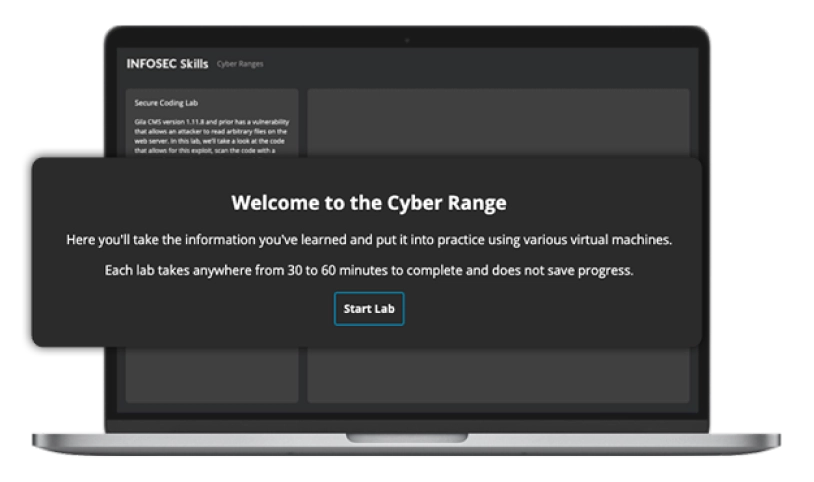
Introduction to Vulnerability Management Learning Path
9 hours, 52 minutes
Quick facts
About this learning path
-
courses
100% online
-
Duration
9 hours, 52 minutes
-
Assessment
questions
About Introduction to Vulnerability Management
In an ever-evolving environment, staying ahead of the curve is key. This learning path teaches you how to be the proactive steward of your organization’s technology to better manage your organization’s risk. As you progress through the vulnerability management courses, you learn how to set up a virtual testing environment and identify, prioritize and remediate vulnerabilities. You will be exposed to real-world examples and learn the elements necessary to excel in the field.
By the end of this learning path, you will have the knowledge and skills to develop and continuously improve vulnerability management programs, including setting up effective and automated strategies. You will understand who is involved in vulnerability management, what it entails and the sources of vulnerabilities.
Who is this learning path for?
This Introduction to Vulnerability Management Learning Path is specifically designed for those who want to better their understanding of security vulnerabilities, including:
- SOC Analysts
- Penetration Testers
- Information Risk Analysts
- Security Managers
- Secure Coders
- Anyone who wants to learn more about vulnerability management
By the end of this learning path, you will:
- Have a solid grasp of necessary vulnerability software and VMs
- Be able to define and execute a vulnerability management strategy
- Be able to create and train others on an effective vulnerability management plan
- Have a solid grasp of automated vulnerability scanners
- Be able to execute manual verification
- Be able to prioritize vulnerabilities
- Understand vulnerability remediation
- Be familiar with the OWASP Top 10
Syllabus
Vulnerability Management Skill Assessment
Assessment - 63 questions
Introduction to Vulnerability Management
Course - 00:23:00
Setting Up Your System
Course - 00:22:00
Vulnerability Management Process
Course - 01:03:00
Automated Vulnerability Scanners
Course - 00:36:00
Manual Vulnerability
Course - 01:03:00
Prioritizing Vulnerabilities
Course - 00:14:00
Remediation
Course - 00:27:00
Web Application Vulnerabilities
Course - 00:53:00
Frameworks
Course - 00:47:00
Vulnerability Management Summary
Course - 01:19:00
The details
Learning path insights
How to claim CPEs
Should you complete this learning path, you’ll be able to download a certificate of completion. Use this to claim your CPEs or CPUs.
Associated NICE Work Roles
All Infosec training maps directly to the NICE Workforce Framework for Cybersecurity to guide you from beginner to expert across 52 Work Roles.
- All-Source Analyst
- Mission Assessment Specialist
- Exploitation Analyst
No software. No set up. Unlimited access.
Skip the server racks and spin up a realistic environment with one click. Infosec Skills cyber ranges require no additional software, hardware or server space so your team can spend less time configuring environments and more time learning. Unlimited cyber range access is included in every Infosec Skills subscription so your team can skill up however they learn best.

Unlock 7 days of free training
- 1,400+ hands-on courses and labs
- Certification practice exams
- Skill assessments
Plans & pricing
Infosec Skills Personal
$299 / year
- 190+ role-guided learning paths (e.g., Ethical Hacking, Threat Hunting)
- 100s of hands-on labs in cloud-hosted cyber ranges
- Custom certification practice exams (e.g., CISSP, Security+)
- Skill assessments
- Infosec peer community support
Infosec Skills Teams
$799 per license / year
- Team administration and reporting
- Dedicated client success manager
-
Single sign-on (SSO)
Easily authenticate and manage your learners by connecting to any identity provider that supports the SAML 2.0 standard.
-
Integrations via API
Retrieve training performance and engagement metrics and integrate learner data into your existing LMS or HRS.
- 190+ role-guided learning paths and assessments (e.g., Incident Response)
- 100s of hands-on labs in cloud-hosted cyber ranges
- Create and assign custom learning paths
- Custom certification practice exams (e.g., CISSP, CISA)
- Optional upgrade: Guarantee team certification with live boot camps

